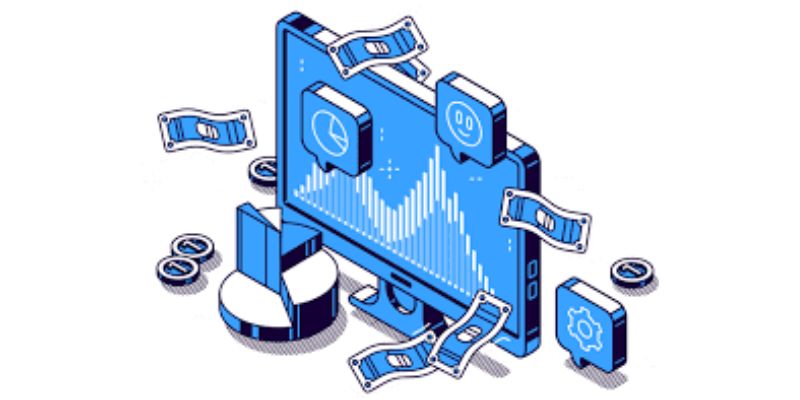Are you interested in learning more about the Consumer Price Index (CPI) and its economic impact? The CPI is an important economic indicator that measures consumer price changes for goods and services within a given period. We will explain what the CPI measures, how it affects consumer spending, and what trends can be observed when analyzing this data.
By understanding these concepts, we can make better-informed decisions when adapting to changing economic conditions as citizens and consumers. So get ready – let’s explore the complexities of the CPI together.
What Is the Consumer Price Index (CPI)?

The Consumer Price Index appraise the average change over time in the prices consumers pay for a basket of goods and services. The CPI measures how price changes affect consumer spending patterns and inflation. In other words, it tracks what people pay for consumer products or services.
The U.S. Bureau of Labor Statistics calculates the CPI monthly based on surveys conducted each month to track prices at various retail outlets nationwide. The index consists of market baskets of goods and services representing spending habits in urban areas throughout the United States.
This consumer index helps economists gauge how price increases or decreases may affect consumer behavior and other economic factors such as inflation rates, wage growth, and labor costs.
Types of Consumer Price Indexes (CPIs)

- The All Items CPI measures changes in the prices of all goods and services, excluding food and energy costs.
- The Core CPI tracks the prices of all items except for volatile items such as food and energy. This measure is more stable over time than the overall CPI because it excludes these volatile components from its calculation.
- The Food at Home CPI focuses on the cost of groceries purchased at home, including both processed and unprocessed foods.
- The Energy CPI tracks changes in energy costs, including gas, electricity, fuel oil, etc.
- The Medical Care CPI measures price changes for medical care services like doctor visits and hospital stays; drugs; medical supplies; equipment; health insurance premiums; eyeglasses; and other medical items.
How Does the Consumer Price Index Affect Consumers?
The CPI affects consumers in three primary ways: it influences consumer spending, provides economic insight into inflation rates, and helps determine wage growth.
When prices rise, people often have less money to spend on other things. This reduces consumer spending, which can lead to slower economic growth.
Conversely, when prices fall, people have more money to spend, leading to increased economic activity. Inflation or deflation is also closely tied with changes in the CPI since rising prices generally reflect an increase in inflation, while decreasing prices usually indicate deflation.
Finally, the CPI can be used as a benchmark when negotiating wages or salary increases. When the CPI rises, employers often raise salaries to keep up with the cost of living.
Consumer Price Index (CPI) Formulas
The CPI formula measures the current average price of a basket of goods and services relative to the average price of the same basket from a base period. The index is calculated as follows:
CPI = (Current Price/Base Price) x 100
For example, if the average price of a basket of goods in the current month was $100 and the same basket cost $90 during the base period, then the current CPI would be 111.1 ((100/90) x 100).
Consumer Price Index (CPI) Categories
The Consumer Price Index is divided into eight major categories:
• Shelter
• Food and beverages
• Clothing and footwear
• Transportation
• Medical care services
• Recreation
• Education
• Other goods and services.
Each category represents the average price change for particular goods and services over time.
How Is the Consumer Price Index (CPI) Used?
Economists, businesses, and governments use the CPI to make decisions about monetary policy, inflation rates, taxation, and more. It is also used to adjust benefits programs like Social Security payments.
Businesses use the CPI to measure changes in their operating costs and set prices for goods or services they offer. Governments often use the CPI to adjust tax brackets or determine benefit levels for social welfare programs.
Finally, individuals can use the CPI to plan for retirement by tracking inflation trends. This can help people decide whether they have enough money for their future needs or need to save more to keep up with rising prices.
The Federal Reserve
The Federal Reserve (Fed) uses the CPI to help make monetary policy decisions. Specifically, the Fed must decide whether to raise or lower interest rates to maintain price stability.
The Fed might reduce interest rates to stimulate economic activity when inflation is low. Conversely, if inflation increases too quickly, the Fed may increase interest rates to slow economic growth and prevent prices from rising too rapidly.
Other Government Agencies
Other government agencies use the CPI to measure changes in expenses such as wages, social security payments, taxes, and other benefits.
For example, when there is an increase in the CPI, Social Security payments may be adjusted to keep up with the rising cost of living. Similarly, tax brackets are often set concerning the CPI so that individuals don’t pay more than they should due to inflation.
Housing
The housing market is often affected by changes in the CPI. When prices rise, people may opt to rent rather than buy a home due to the increased cost of purchasing a property.
Likewise, when inflation is low, people may be more willing to purchase houses since they can keep more money in their pockets. This helps stimulate economic activity and contributes to an overall healthier housing market.
Financial Markets
Changes in the CPI can also affect financial markets. When inflation rises, borrowing money costs increase, leading to higher interest rates. These financial markets can cause stock prices to drop due to investors’ expectations for lower profits in the future.
Likewise, when prices fall, and inflation is low, investors may be more willing to take on riskier investments as they expect higher returns and increased corporate earnings. This market helps keep stock prices stable or even increase them over time.
Labor Markets
The CPI also impacts labor markets. When prices rise, businesses may need to pay employees more to keep up with the cost of living and stay competitive.
This labor market can lead to a shortage of workers as employers try to recruit new people while existing workers demand higher salaries. This labor market can reduce economic output as companies struggle to maintain their workforce levels.
FAQS
What is the consumer price index CPI criticized for?
The CPI is often criticized for not accurately measuring the cost of living since it fails to account for changes in quality or new products. For example, if the price of a laptop decreases but its performance increases, the CPI would not reflect this improvement.
As such, some people believe that the CPI needs to provide an accurate picture of inflation and rising costs.
What are the benefits of the CPI?
The CPI is a useful metric for governments, businesses, and individuals. It provides insight into inflation and wage growth, helping people make informed decisions about their finances and investments. In addition, it also helps governments adjust benefits levels to keep up with the rising cost of living.
How does CPI affect inflation?
Inflation is closely tied to changes in the CPI. When prices rise, it usually indicates an increase in inflation, while decreasing prices often indicate deflation. The Federal Reserve may use this information to adjust interest rates and influence economic activity.
Conclusion
In conclusion, the Consumer Price Index (CPI) is a valuable tool for understanding price changes across different items, sectors, and geographical locations. It’s an important tool that helps inform business decisions, policy development, and forecasting activities. Businesses can quickly identify changing price trends and adjust their operations by comparing current CPI data to past values.




